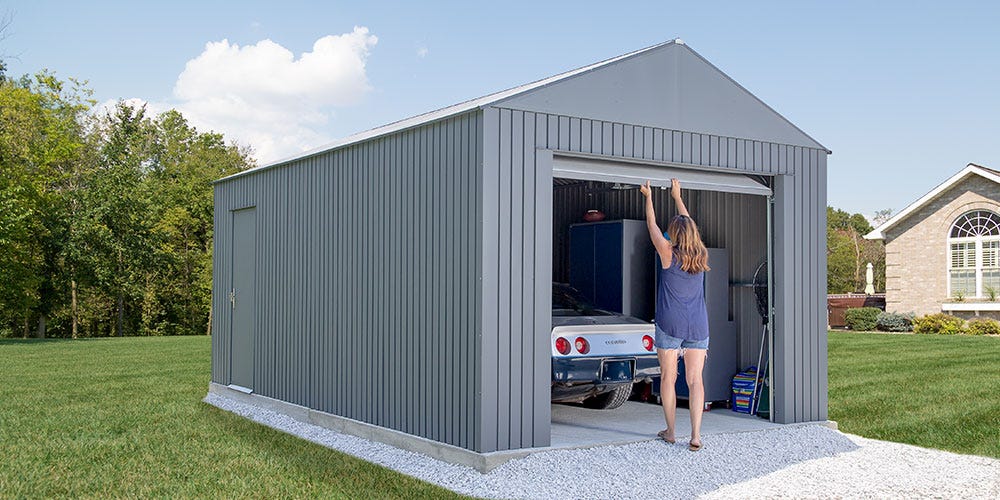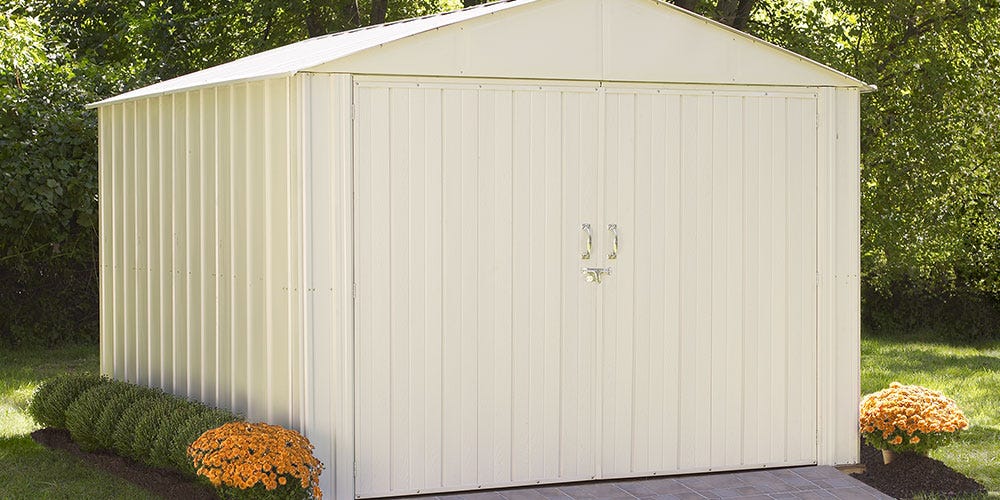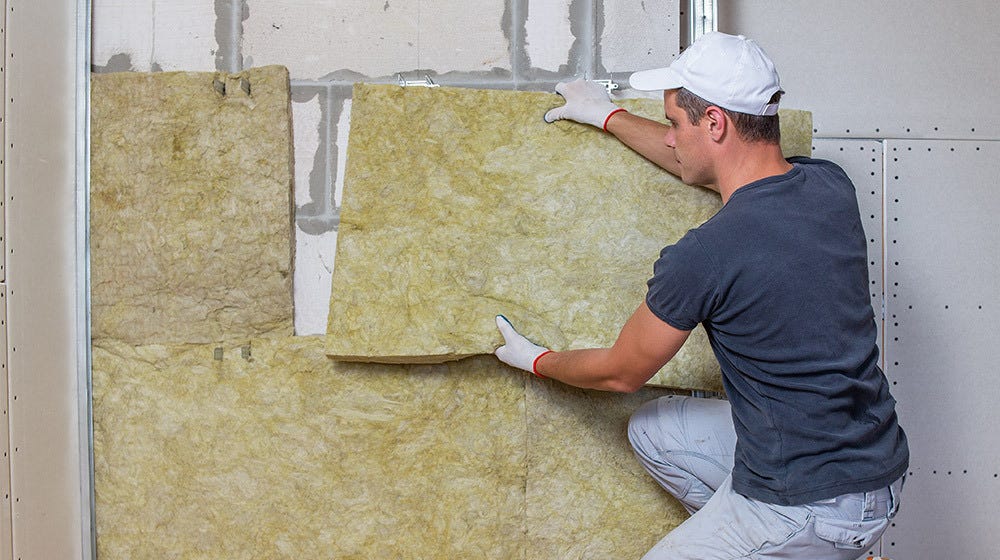Insulating a steel building like a storage shed or garage can add valuable temperature control and prolong its life. This is a worthwhile upgrade that will increase the longevity of your investment and help protect your belongings.
Installing insulation in a steel shed isn’t a complicated process and can be done within a weekend when you have enough help and a plan. Thankfully, it usually isn’t an expensive process, but if you desire some long-lasting solutions, pros can help you get the results you want. This quick guide will explain how to insulate a steel building so you can get the most of its value.
Why Insulate?
Learning how to insulate a shed or garage can help you protect your garage against common problems like condensation and rust. When moist air hits a colder surface, the moisture hits its dew point and settles, causing condensation. Moisture can cause problems with many structural materials—especially metal and wood. Metal is prone to rust when exposed to too much standing water, and wood can rot or develop mildew.
Adding insulation helps reduce condensation build-up by creating a more stable internal temperature. This not only protects your steel structure but extends its life. Since you already have invested in a shed, why not give your steel building the extra protection it needs to last as long as possible?
Insulation + HVAC for Personal Recreation
Steel garages and sheds have many functions. No matter what you plan to use it for, insulation will make the structure more durable and suited for storing your belongings. However, if you plan to occupy the building, insulation is no longer optional—it’s vital for your comfort. Whether you want to get crafting or watch the big game, a properly insulated steel shelter can give you that space to be you.
Talk to a trusted contractor to see if installing a mini-split air conditioner is possible. This will help you install a temperature control unit to make it just as cozy as another room of your house and keep most or all of the condensation away.
Since air conditioners act as dehumidifiers, this extra support will offer your insulated shed an edge over non-temperature-controlled units. If anything, invest in a long extension cord that can safely reach your shed so you can operate a portable air conditioner or heater while you occupy the space.
An insulated shed is an excellent place to practice music, install a workshop, or make a temperature-controlled man cave or she shed. By providing an environment with fewer temperature fluctuations and walls just as hardy as those of your home, you can confidently store more precious items within your steel structure.


How to Insulate a Steel Building
There are several types of insulation available for your steel shed that range from simple DIY jobs to more costly but effective jobs that are meant for pros. Though each of these materials mitigates condensation, some work better than others. Here a few of the ways to insulate to prevent rust in steel sheds.
The Most Recommended: Radiant Barrier Insulation
Radiant barrier insulation is usually installed in attics to deflect high temperatures in the summer, but it's an effective insulator for all seasons too. It’s made of a material that reflects radiant heat. This type of insulation is one of the most recommended for metal buildings because it’s energy-efficient, durable, and is easy to remove. For people who want to turn a storage building into a man cave or she-shed, insulation of this grade is necessary for your comfort.
The process to install radiant barrier insulation is time-consuming and requires professional help if you’re a novice. Before you begin, make sure that the initial steel frame is fully constructed. When you start, measure the area of the steel panel, and cut out the radiant insulation to match the dimensions. Then, use double-sided tape to secure the insulation and screw on the exterior steel panel to complete the wall. This is at least a two-person job and must be done in the right conditions (no rain or wind).
The Cheapest: Foam Boards
If you already have a steel building on your property, you can retrofit some foam boards into the interior. This is a common choice that doesn’t cost a lot of money. Since most steel sheds have walls divided into paneled sections, foam boards can be easy to cut and fit snugly into segments of interior walls. This is an easy DIY job that can be done alone, so it’s a decent temporary fix to a condensation problem that you don’t have to wait to try.
To start, simply measure the length and height of your shed’s interior panels and determine how many foam boards would be required to fill in these areas. Then, purchase the material and cut them out to the desired dimensions. Finally, use aluminum tape to adhere the foam boards to your shed’s interior walls. This method won’t provide the best insulation but there will be an improvement in the amount of condensation formed and there won't be as extreme fluctuations in temperatures.
Since foam boards are one of the most economic solutions, they are also more likely to lose their form over time. Keep a close watch and replace any boards that start to peel or warp. Staying on top of this will make sure your shed stays in the best condition.
The Lowest Maintenance: Spray Foam
Applying spray polyurethane foam (SPF) insulation is a high-quality option that homeowners use when they need a durable, long-lasting solution to condensation. This premium building insulation is popular in both commercial and residential insulation and it’s used in everything from plumbing to roofing. Spray foam isn’t just an excellent insulator, but it is also water-proof and pest-proof. If you have a shed that is prone to pests, then this insulation will keep them out.
SPF can be applied to existing steel structures, so it’s a good project to initiate when you decide to upgrade your shed’s potential. If you live in a cold or dusty area, then spray foam is the ideal material to keep your shed’s interior stable. It also doesn’t hold in moisture so it’s good for combating condensation.
The only drawbacks to spray foam are the cost and difficulty in removing the material. Spray foam machinery is highly specialized and even DIY kits can cost several hundred dollars. For a good installation, a pro should handle the job. Spray foam is also rigid and hard to remove once it settles, so it will take much effort to remove.
The Easiest to Install: Fiberglass Sheets
Fiberglass is one of the most common home insulation materials. However, it has recently been overtaken by more efficient materials like spray foam and radiant insulation as more contractors seek durable, eco-friendly materials. However, when you’re in a pinch, you can always find some rolled fiberglass at the hardware store.
To install, simply attach separate strips of the material to the interior of your shed. This spacing is necessary because of the shed’s separate panels and studs. This insulation is acceptable if it’s the only thing you can find and if it’s a temporary solution. However, since it’s prone to hold in moisture, it should not be a long-term installation.
Make Your Insulation Look Good
After you install insulation, the sight of bare spray foam or radiant barriers may have an industrial appeal but not exactly the look you want. Take the extra step to make your insulation more attractive by adding wallpaper or drywall over it.
Drywall will enable you to hang up photos and set up your shed as a hangout. It’s not a totally necessary step but just an extra one to create a pleasant look. You can also paint drywall, so it’s an excellent finishing touch to an insulated building that will be used as a place for long-term hangouts.


Not Just Any Steel Building
Getting just any type of shed or garage doesn’t guarantee the same results as buying a high-quality shed or garage with advanced features. If you go with just any shed, you can miss out on some ingenious solutions that can last for more than a few years.
Get a Steel Shed with Advanced Features
There are many steel sheds out there, but few stand up to their promises. The Arrow Select Steel Storage Shed is an example of a steel shed with excellent workmanship. It’s made with galvanized steel that is primed to resist corrosion and rust. Inside, the shed has ample vertical storage space and clearance in the entryway so you can store large seasonal items.
It’s also made with the awareness that water needs to stay away from metal. The high gable roof has enough slope to prevent rainwater and debris from collecting and pooling. Strategically-located air vents promote better air circulation—a big help against condensation. Meanwhile, the polyester Sherwin-Williams paint finish provides an extra layer of protection against UV rays and corrosion.
Find Steel Buildings at ShelterLogic
An insulated shed offers many benefits, regardless of your climate. By reducing condensation and increasing internal temperature stability, your metal shed or garage can become a comfortable place to store items and relax. Discover a wide variety of high-quality steel outdoor storage buildings at ShelterLogic.

